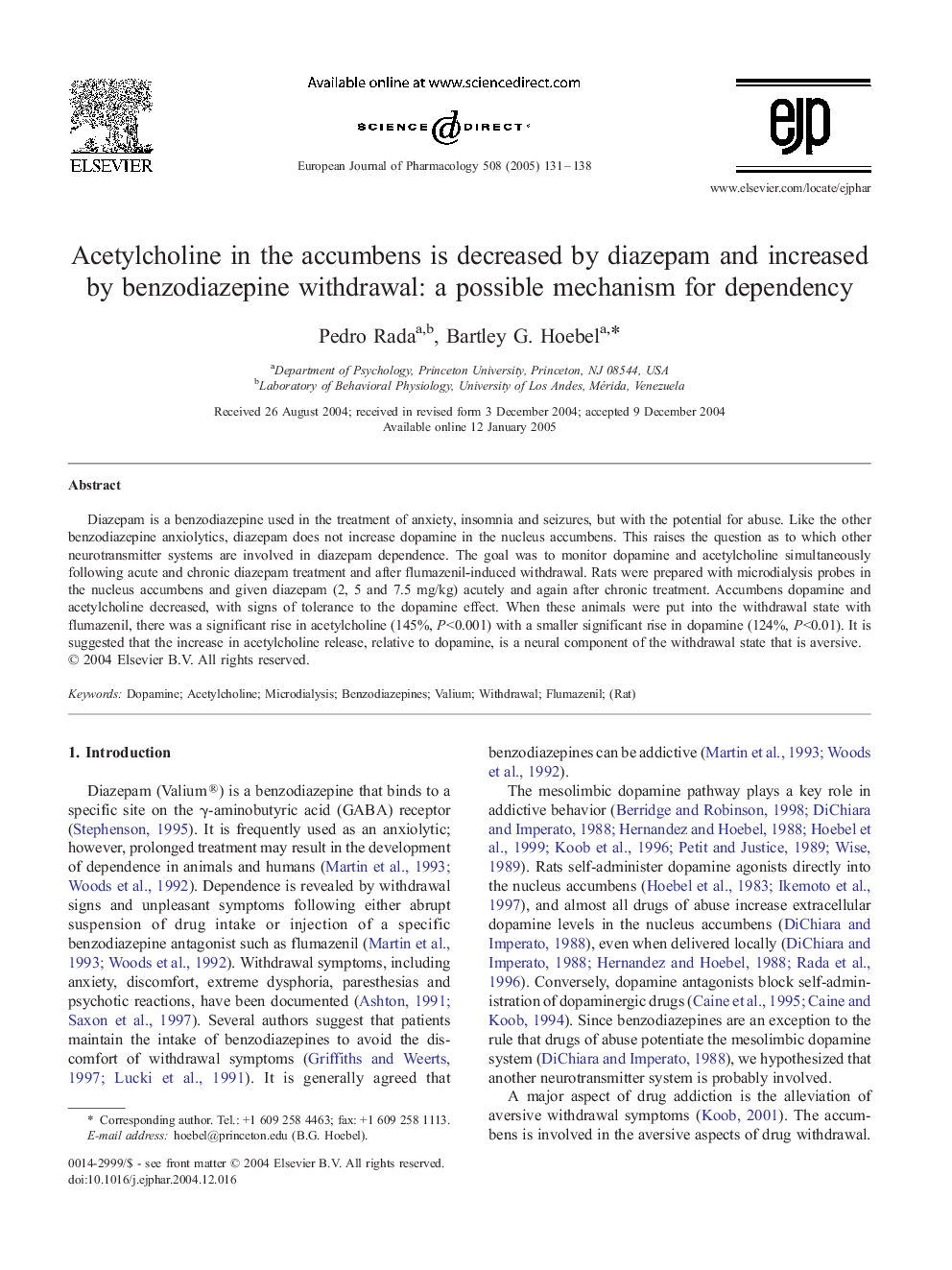| Article ID | Journal | Published Year | Pages | File Type |
|---|---|---|---|---|
| 9921529 | European Journal of Pharmacology | 2005 | 8 Pages |
Abstract
Diazepam is a benzodiazepine used in the treatment of anxiety, insomnia and seizures, but with the potential for abuse. Like the other benzodiazepine anxiolytics, diazepam does not increase dopamine in the nucleus accumbens. This raises the question as to which other neurotransmitter systems are involved in diazepam dependence. The goal was to monitor dopamine and acetylcholine simultaneously following acute and chronic diazepam treatment and after flumazenil-induced withdrawal. Rats were prepared with microdialysis probes in the nucleus accumbens and given diazepam (2, 5 and 7.5 mg/kg) acutely and again after chronic treatment. Accumbens dopamine and acetylcholine decreased, with signs of tolerance to the dopamine effect. When these animals were put into the withdrawal state with flumazenil, there was a significant rise in acetylcholine (145%, P<0.001) with a smaller significant rise in dopamine (124%, P<0.01). It is suggested that the increase in acetylcholine release, relative to dopamine, is a neural component of the withdrawal state that is aversive.
Related Topics
Life Sciences
Neuroscience
Cellular and Molecular Neuroscience
Authors
Pedro Rada, Bartley G. Hoebel,
